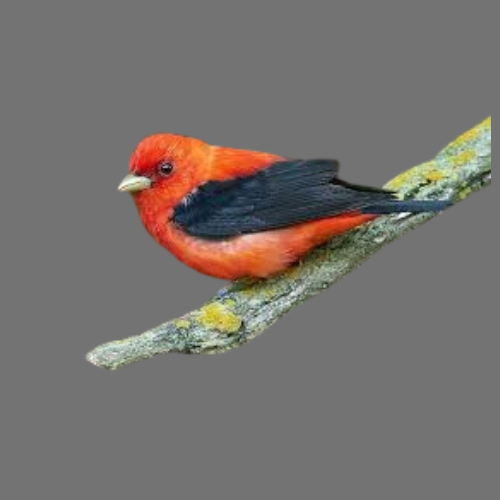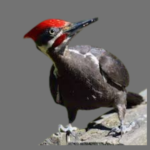Birds are fascinating creatures that play vital roles in ecosystems worldwide. They are admired for their beauty, unique behaviors, and incredible adaptations. From the tiny hummingbird to the mighty eagle, birds come in a variety of shapes, sizes, and colors. This article explores the world of birds, covering their characteristics, habitats, diets, and much more.
Characteristics of Birds
Birds are warm-blooded animals that belong to the class Aves. They are distinguished by several unique features:
Feathers
Feathers are a defining characteristic of birds. They provide insulation, help in flight, and play a role in communication and mating displays.
Beaks
Birds have beaks instead of teeth. Their shape and size vary widely, depending on the bird’s diet and lifestyle. For example, eagles have sharp, hooked beaks for tearing meat, while ducks have flat beaks for filtering water.
Lightweight Skeleton
Birds have lightweight skeletons with hollow bones, making them well-suited for flight. This adaptation reduces body weight without compromising strength.
Eggs
Birds lay hard-shelled eggs, which provide protection to developing embryos. Nests are often built to keep the eggs safe from predators and harsh weather.
Types of Birds
There are over 10,000 species of birds, each with unique adaptations to their environment. Here are some common types:
Songbirds
Songbirds, like robins and sparrows, are known for their melodious calls. They make up about half of all bird species.
Birds of Prey
Birds of prey, such as hawks and owls, are skilled hunters with keen eyesight and powerful talons.
Waterfowl
Waterfowl, including ducks, swans, and geese, are adapted to aquatic environments. They often have webbed feet for swimming.
Flightless Birds
Some birds, like ostriches, penguins, and emus, have lost the ability to fly. These species have strong legs for running or swimming instead.
Bird Habitats
Birds are found in nearly every corner of the globe, from dense forests to barren deserts. Their adaptability is a key factor in their widespread distribution.
Forests
Forests provide shelter and abundant food for many bird species. Parrots, woodpeckers, and toucans thrive in these environments.
Wetlands
Wetlands are home to wading birds like herons and flamingos. These areas offer plenty of fish, insects, and plant material.
Grasslands
Grasslands support ground-dwelling birds like quails and pheasants. Birds of prey, such as eagles, are also common in these open landscapes.
Urban Areas
Many birds, such as pigeons and crows, have adapted to life in cities. Urban areas provide nesting sites and a steady food supply.
Bird Behavior
Birds exhibit a wide range of behaviors that make them both intriguing and complex creatures.
Migration
Many bird species migrate to find food or suitable breeding grounds. For example, Arctic terns travel thousands of miles each year between the poles.
Communication
Birds communicate through songs, calls, and body language. These methods help them establish territories, attract mates, and warn of danger.
Nesting
Birds build nests to protect their eggs and young. Nests can range from simple scrapes in the ground to intricate woven structures.
Bird Diets
Birds have diverse diets that depend on their species and habitat. Their feeding habits often influence their physical characteristics.
Carnivorous Birds
Carnivorous birds, like hawks and owls, prey on small animals, insects, and fish. They have sharp beaks and talons for hunting.
Herbivorous Birds
Herbivorous birds, such as parrots and finches, feed on seeds, fruits, and nectar. Their beaks are adapted for cracking seeds or sipping nectar.
Omnivorous Birds
Omnivorous birds, including crows and gulls, eat a mix of plant and animal matter. This diet makes them highly adaptable.
The Importance of Birds
Birds play crucial roles in maintaining ecological balance. They contribute to the health of ecosystems in various ways:
Pollination
Hummingbirds and other nectar-feeding species help pollinate plants by transferring pollen as they feed.
Pest Control
Insect-eating birds, like swallows and woodpeckers, help control pest populations, benefiting agriculture.
Seed Dispersal
Birds that eat fruits often disperse seeds through their droppings, aiding in plant reproduction.
Threats to Bird Populations
Despite their adaptability, many bird species face significant threats due to human activities and environmental changes.
Habitat Loss
Deforestation, urbanization, and agriculture reduce the natural habitats available to birds.
Climate Change
Rising temperatures and shifting weather patterns disrupt migration routes and food availability.
Pollution
Pollution, including pesticides and plastic waste, poses a serious threat to bird health and survival.
Illegal Hunting
Poaching and the illegal pet trade have devastating effects on certain bird populations, especially rare and exotic species.
How to Help Birds
There are many ways we can contribute to the conservation and well-being of birds:
Create Bird-Friendly Spaces
Plant native trees and shrubs to provide food and shelter. Installing bird feeders and birdhouses can also attract local species.
Reduce Pollution
Properly dispose of waste and limit the use of pesticides to minimize harm to birds and their habitats.
Support Conservation Efforts
Donate to or volunteer with organizations dedicated to bird conservation and habitat restoration.
Educate Others
Raise awareness about the importance of birds and the challenges they face. Encouraging others to take action can have a broader impact.


